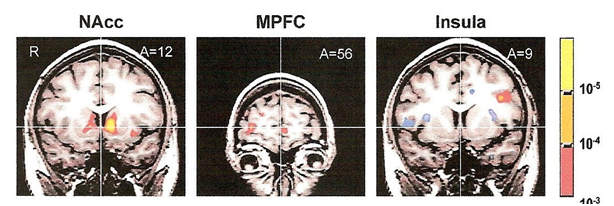Article
Why Your Brain Prefers a Bargain
Author(s):
A new study shows people make purchasing decisions based on their perception of the cost, rather than the actual price. Though the authors studied the purchase of various consumer products, if one considers stock and other investments as merchandise, the same results would seem to apply.
People love bargain-hunting so much there is even a website devoted to stories about it. Investors, of course, like a good buy too. Now, we know why this is a universal quality.
Brian Knutson, Scott Rick and others studied the phenomenon in “Neural Predictors of Purchases,” published in the journal, Neuron. In a nutshell, it showed that the subjects did not respond as much to absolute price as to the price relative to what they thought was suitable. In other words, preconceived notions of cost influenced their purchases. Though the authors studied the purchase of various products, if one considers stock as merchandise, the same results would appear to apply.
The subjects were examined using functional magnetic resonance imaging (FMRI) while taking a SHOP task. (SHOP stands for “Save Holdings or Purchase.”) The test is comprised of trials where participants could purchase products. They were identical in the time sequence. Those taking part saw a labeled item, then its price, and lastly chose whether to buy or not. The scientists predicted that: 1.) During the initial presentation the item would activate neural circuits associated with anticipated gain; and 2.) During the price appearance excessive costs would activate circuits associated with potential loss, as well as deactivate brain regions previously associated with balancing potential gains against losses.
The authors were correct in their prediction: During the product presentation, the nucleus accumbens (NAcc), or pleasure center of the brain, was activated indicating anticipation of a gain. But, if the price was excessive per the judgment of the subject, the product was unlikely to be chosen. Then the medial prefrontal cortex (MPFC) that is associated with decision-making was deactivated, while the insula -- known to be related to losses -- was stimulated. This suggests that the insula suppressed the MPFC.
In the words of the authors, “The findings are consistent with the hypothesis that the brain frames preference as a potential benefit and price as a potential cost, and lends credence to the notion that consumer purchasing reflects an anticipatory combination of preference and price considerations.” Scott Rick, the paper’s co-author, summarized its importance in an email, “The paper helps us better understand how emotions influence spending behavior. Specifically, the paper provided the first physical evidence suggesting that people rely on distress to deter their spending. The notion of a ‘pain of paying’ had previously been used to explain some non-rational behavioral phenomena, but there had never been any clear process evidence supporting the notion.”


From “Neural Predictors of Purchases” in the journal Neuron, pg. 149:
*** = product presentation
$$$ = price appears
??? = purchase decision is made
As the diagram shows, the brain’s pleasure center and decision processor are activated (yellow-red color) when the insula, or excessive price detector, is quiet, or shaded blue. If the insula were activated because of a high price judged by the subject, the pleasure center and decision processor would light up less brightly.
Unlike the study subjects, investor selections can be more problematical than their choices because market forces change quickly and company information is not always transparent. Nevertheless, the results of this study parallel our own investment decisions because, like the study participants, we prefer bargains too -- though our choice is which stock, mutual fund or exchange traded fund to buy.




